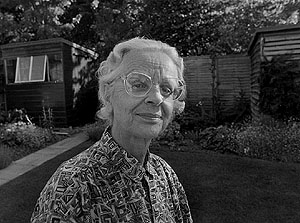Our criteria for publishing work in this form are that it must have cohesion and integrity, form a body of work or a set, be original or likely to be new to most readers in form and content. We prefer to consider work only from photographers in the first five years of their professional careers (if professional) or recent work from amateurs. We are not looking for routine sets of commercial pictures, or general interest themes which would be suitable as illustrated features in non-photographic publications. Quality is vital and the work must either be of a standard which would attract the attention of advertising agency art directors, or art galleries.
Submissions should consist of around 20 originals, which may be slides from 35mm to 10 x 8", or prints up to A4 size (unmounted). Return postage and packing should be enclosed and all originals must be marked with the photographer's name and address. Work may be held for six or more months if suitable for consideration.
The address for submissions is:
 Maija McDougal was born in Latvia in Eastern Europe some 70 years ago and
arrived in England, after the war in 1947, having studied music in Latvia.
Her studies were continued in the Guildhall School of Music in London and
then she went on to teach classical music in establishments such as The
Royal Academy of Music, with the flute being her main instrument. At the
same time and with her husband Jack, also a musician, she performed in a
number of small classical ensembles.
Maija McDougal was born in Latvia in Eastern Europe some 70 years ago and
arrived in England, after the war in 1947, having studied music in Latvia.
Her studies were continued in the Guildhall School of Music in London and
then she went on to teach classical music in establishments such as The
Royal Academy of Music, with the flute being her main instrument. At the
same time and with her husband Jack, also a musician, she performed in a
number of small classical ensembles. In 1976 Maija discovered photography and joined her local club where she started by taking transparencies and learning how to make black and white prints. However, by the late 1970s Maija began to show an interest in the old processes, particularly bromoils, and attended a few workshops to learn the basics of the process.
Maija told me that "she can't do anything half heartedly" and proceeded to learn all that she could about the bromoil process. She joined the Bromoil Circle of Great Britain, which was founded in 1931; in 1988 Maija became its Secretary and was awarded an Associateship by The Royal Photographic Society for her bromoil prints.
The Bromoil Process evolved in the early 1900s as an alternative to the Oil Process, which necessitated the use of a negative in contact with the paper and therefore restricted the size of the print, whereas Bromoils can be made from enlarged bromide prints.
Maija's life has revolved around the arts although such is her knowledge of the techniques of photography that she confessed to me "every time a film comes out it is like a miracle". She has a restless spirit and is continually searching for a new and different approach to her photography and thinks that the bromoil process has great potential in that direction. To that end she has experimented with bromoil transfer, and the little used technique of spoon rubbing. However, I feel that it is in the use of mixing colour and in the choice of subject matter that Maija is beginning to push the boundaries of the bromoil process. Her use of colours and the methods of mixing and applying them are probably at the leading edge of experimental work in the three colour bromoil field.
In addition to the traditional method of applying the pigment with brushes, Maija has used rollers and the bromoil transfer to achieve some of the most beautiful examples of the process that I have seen. Her choice of subject matter is also quite experimental and sometimes can be at odds with the accepted type of image associated with the process.
Not only is Maija involved with British photographic organisations but she is also a member of L'Association Pour La Photographie Ancienne et ses Techniques, a French-based group interested in the old processes. This organisation does valuable work in the field of all the old processes, one of them being a limited edition of photogravures of the members work. In the past few years Maija's work has been shown in the UK, France and Latvia in both group and individual exhibitions. She has also presented workshops, demonstrating her methods of making Bromoil prints, in the same three countries.
The fact that Maija McDougal has established herself as one of the leading exponents of the bromoil process does not surprise me. Her background as a musician offers the clue, in that I can name numerous photographers throughout the world, who have succeeded in both of these demanding and creative art forms. That there is a lady with such a restless spirit and the will to always move forward can only bode well for the Bromoil Process.
For those interested in The Bromoil Circle of Great Britain or in workshops Maija can be contacted on 01684 893520.
Return to Photon September 96 contents